A Close Look At The New Spaero SP1 Tri Suit
A new player in the tri suit game has pulled out all of the stops with a crazy lightweight, full-on bells-and-whistles hybrid one-piece kit that’s unlike anything we’ve seen.
New perk! Get after it with local recommendations just for you. Discover nearby events, routes out your door, and hidden gems when you sign up for the Local Running Drop.
Tri suits are tricky. Anyone who has done more than one triathlon knows that you need a good cycling pad, fabric that breathes (and wicks water), and a suit that fits your body. It wasn’t until recently that we learned that tri suits can also make you literally faster—your body is the greatest aerodynamic challenge, after all—and that the world of clothing textiles is becoming nearly as advanced as race car materials. A good, solid $100 tri suit will still get you from the starting dock to the finish line a thousand times better than a pair of gym shorts and a cotton t-shirt, but now what we wear can actually speed us up and actively cool us down.
We’ve reviewed super high-end tri suits before—ones that were literally custom-tailored to your body or ones that were covered in silicone “trip wires” to cheat the wind—but most of them had “their thing” and not much else. The new $450 Spaero SP1 is a pretty typical tri suit, except that it hits every single tri detail and leaves nothing out.
RELATED: How to Choose the Perfect Tri Suit
Section dividerSpaero SP1 Review: The Features Rundown
Usually we do a features rundown on gear like a smartwatch—with its infinite functions and menus—or a bike—because it’s such a big-ticket item that deserves a full dissection. It’s rare that we break down the features on a tri suit, because, well, there aren’t usually that many to talk about. But the SP1 is so feature-rich that it not only warrants its own extended review (again, rare), but a close look at each of the unique features.
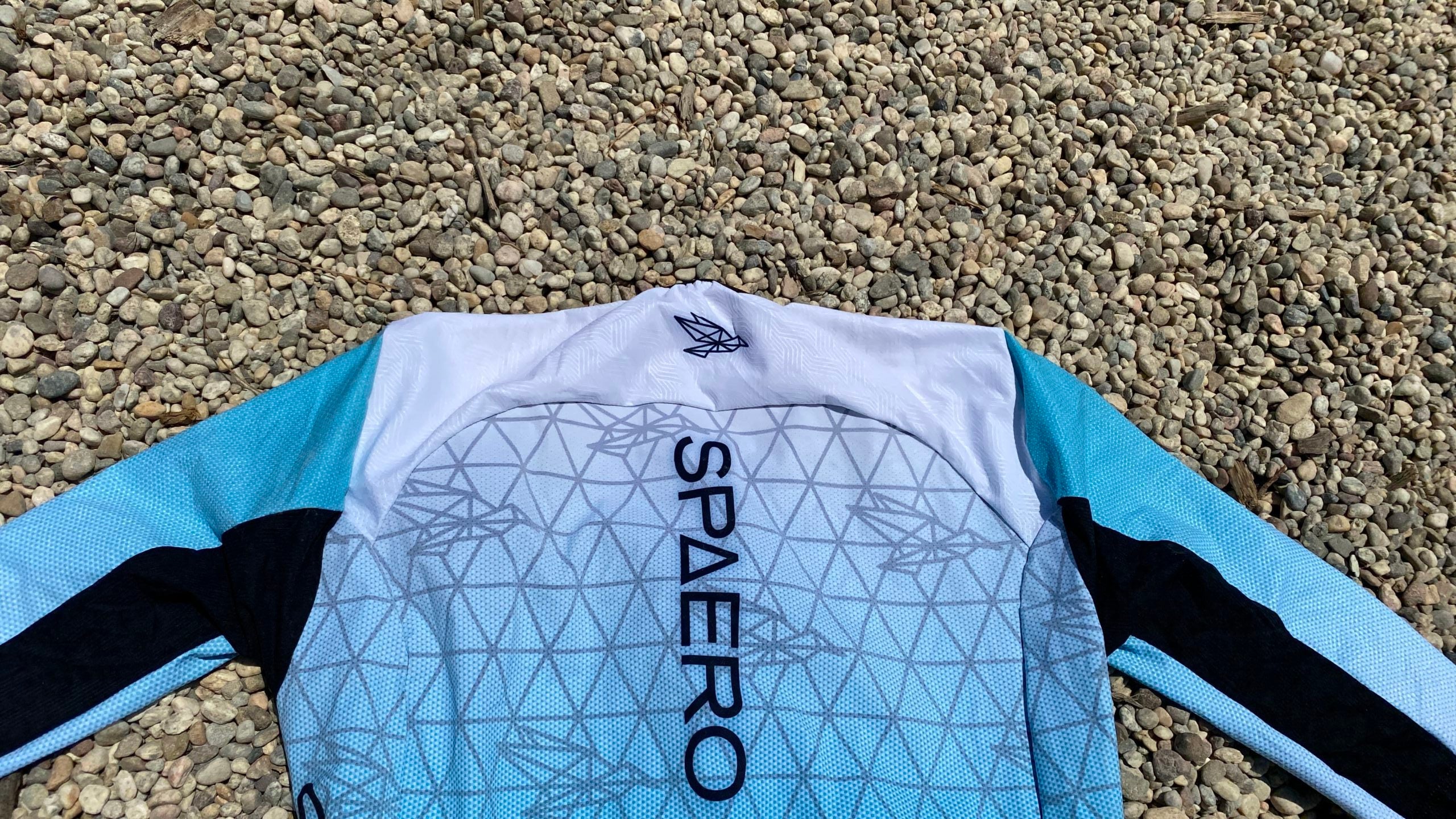
Multiple Ergogenic Panels – Leading off with a picture of the back of this very attractive suit might not be the smartest thing, but it does illustrate well what’s going on with the SP1. From this one shot, you can see a bit of woven, textured, and very lightweight fabric on the top in white, while just below is an entirely different fabric with a graphene print on the inside (more on that later), and on both arms, you see two more fabrics—one woven for aerodynamics and one crazy lightweight, stretchy, and breathable. That’s four entirely different fabrics in one tiny picture that each have their own purpose. That’s also probably a good hint as to why this suit is $450.
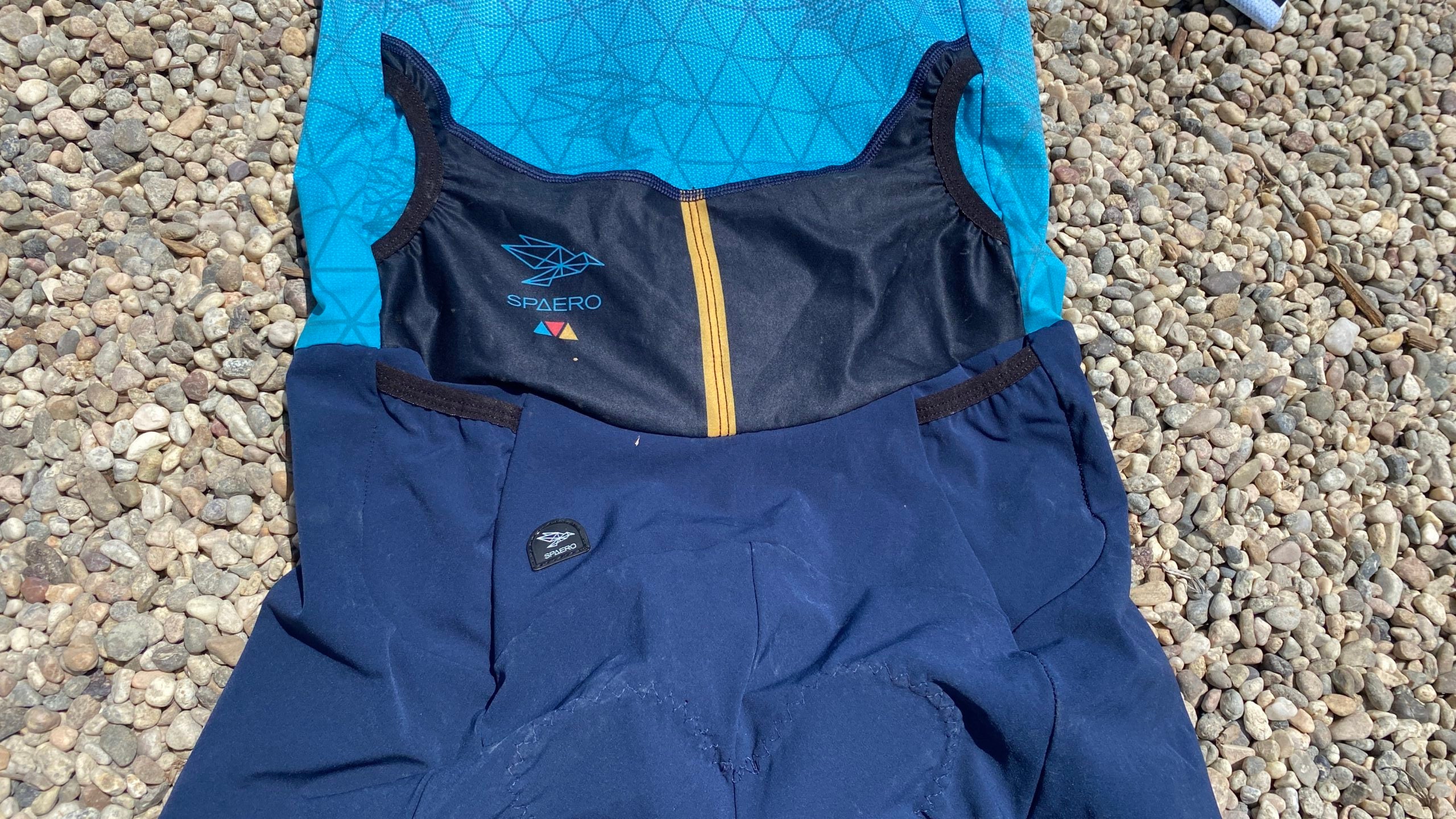
Back Pockets – The back pockets on the SP1 are incredibly detailed, for better or for worse. The top pockets have a small, hemmed sideways opening with enough space for even a smartphone if you were so inclined. The sideways cut and clever way the opening is much smaller than the pocket itself is fantastic. Just below the top pockets are two more pockets with hemmed top-facing openings that could probably fit a gel or two. This is a great detail, except for the fact that the top-facing openings could conceivably catch water if you wore this suit without a wetsuit or speedsuit (which some people definitely could).
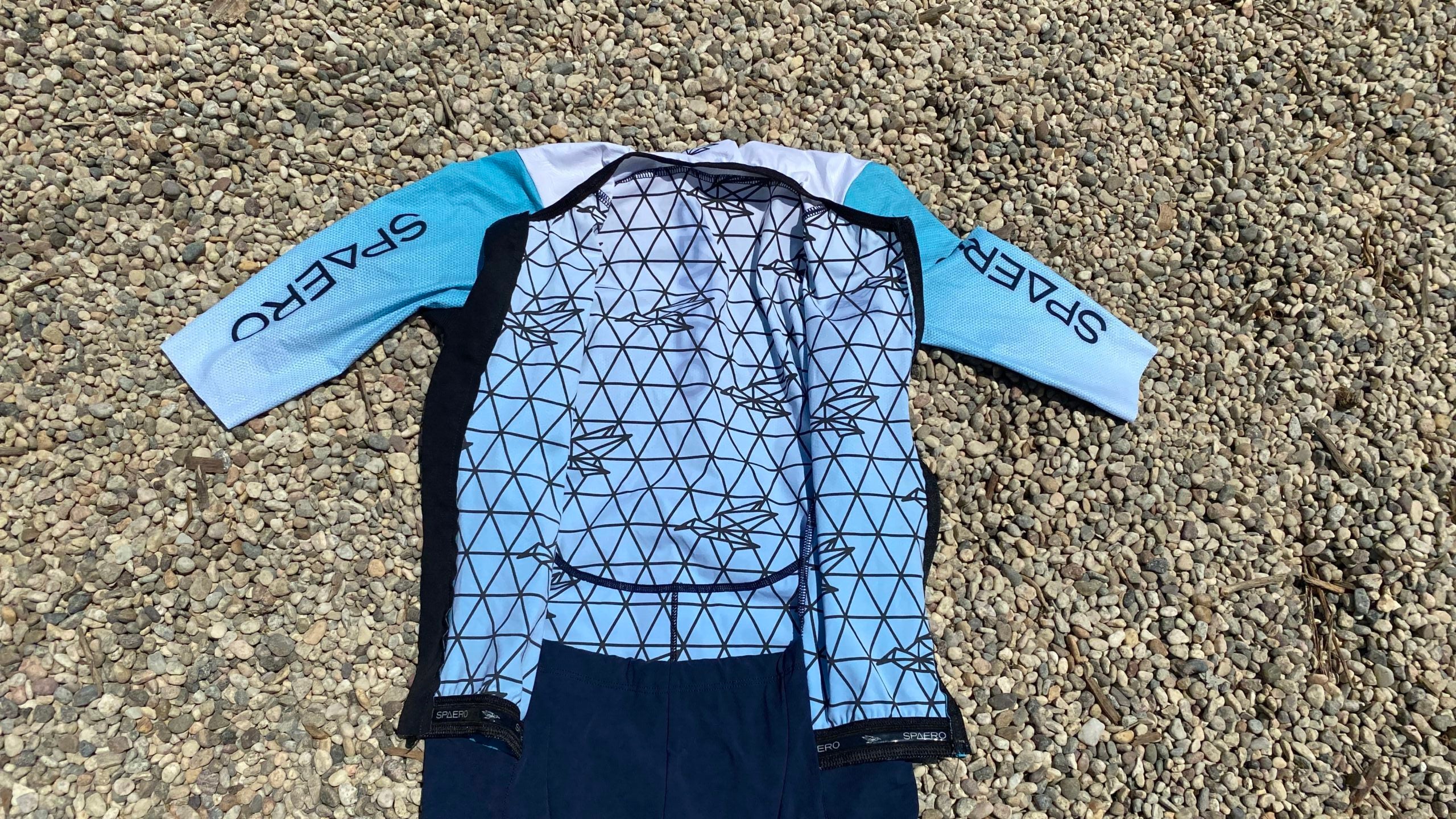
Hybrid-Style Zipper and Graphene Print – While the SP1 isn’t the first to use a hybrid-style one-piece, its execution is excellent. With this design, only half of the top is connected to half of the shorts, allowing for better, less-restrictive movement on the bike (no pulling on the front), and a full opening when unzipped. This means, you won’t have your suit tugging down on the front of your shorts when it gets hot and you need to go topless. We’ve also found that this design has much greater freedom of movement throughout.
When open, you can also see the very unique graphene print on the inside of much of the upper-body fabric. Spaero claims that this tech helps keep core temperatures down and helps wicking (which then reduces chafing).
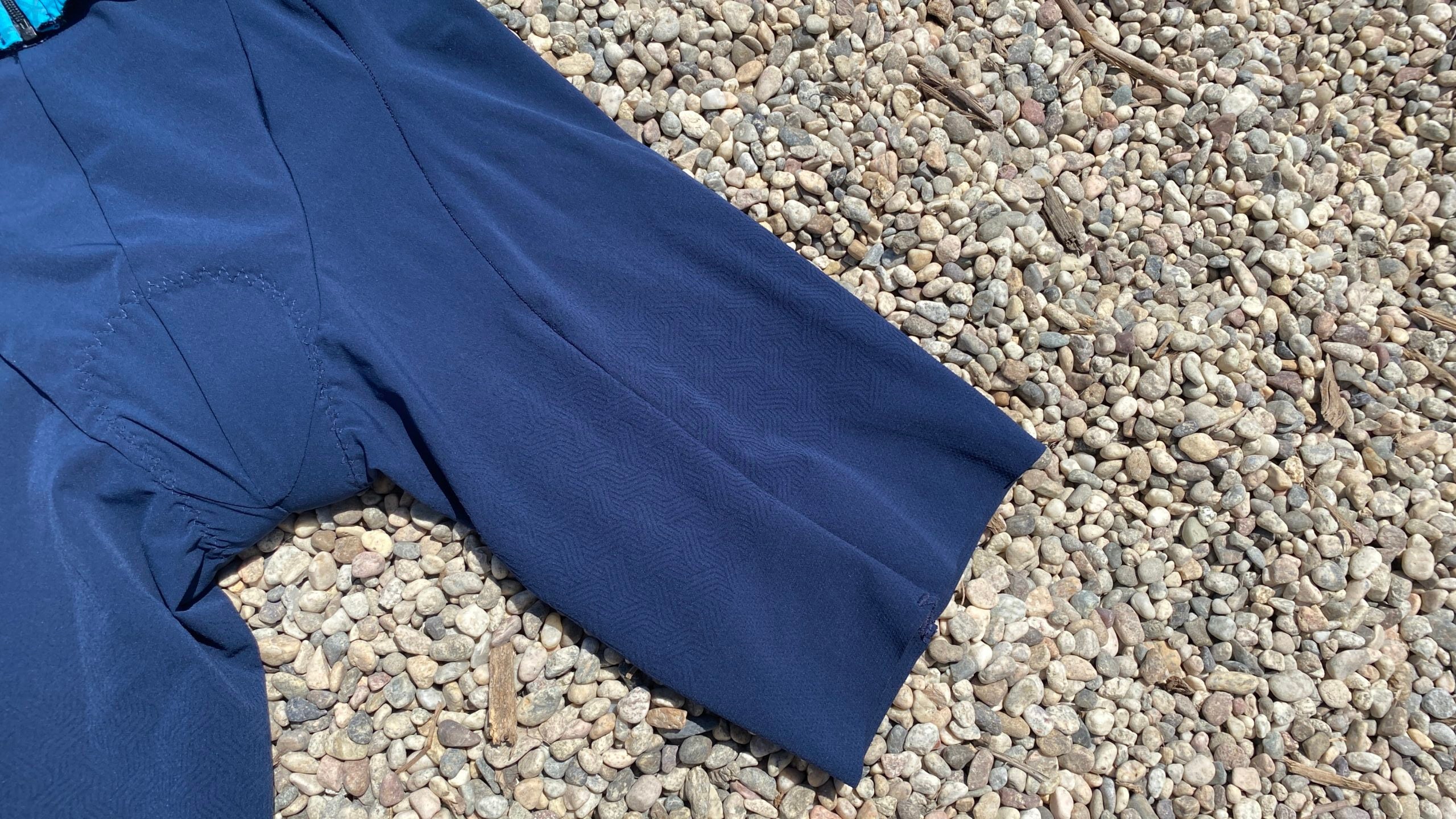
Woven Trip Fabric – This is a new one for tri suits. While some suits have used silicone dots or strips to trip the air moving over your body (and therefore reducing surface drag), Spaero is one of the first to use woven fabric to accomplish the task. Spaero says that the woven fabric will also help increase durability and provide a better level of compression.
Section dividerSpaero SP1 Review: The Fit
Spaero’s fabric is easily some of the thinnest we’ve ever tested—which lends well to hot and/or humid race conditions. With that in mind, the fabric also stretches more than many other suits we’ve tried, so a tighter fit is just fine. One of the side benefits of the woven fabric is that it provides an excellent level of compression, so you’ll want to take advantage of that by choosing your usual size—even though it’ll feel snug at first. The snug fit also helps to avoid extra fabric in those creases of your body that often feel chafing’s wrath. If you have much bigger legs than your size usually suggests, then I would recommend sizing up, as the tightness can constrict larger thighs—same goes for those with exceptionally large arms per size, as the mid-bicep length sleeves are purposefully very very snug.
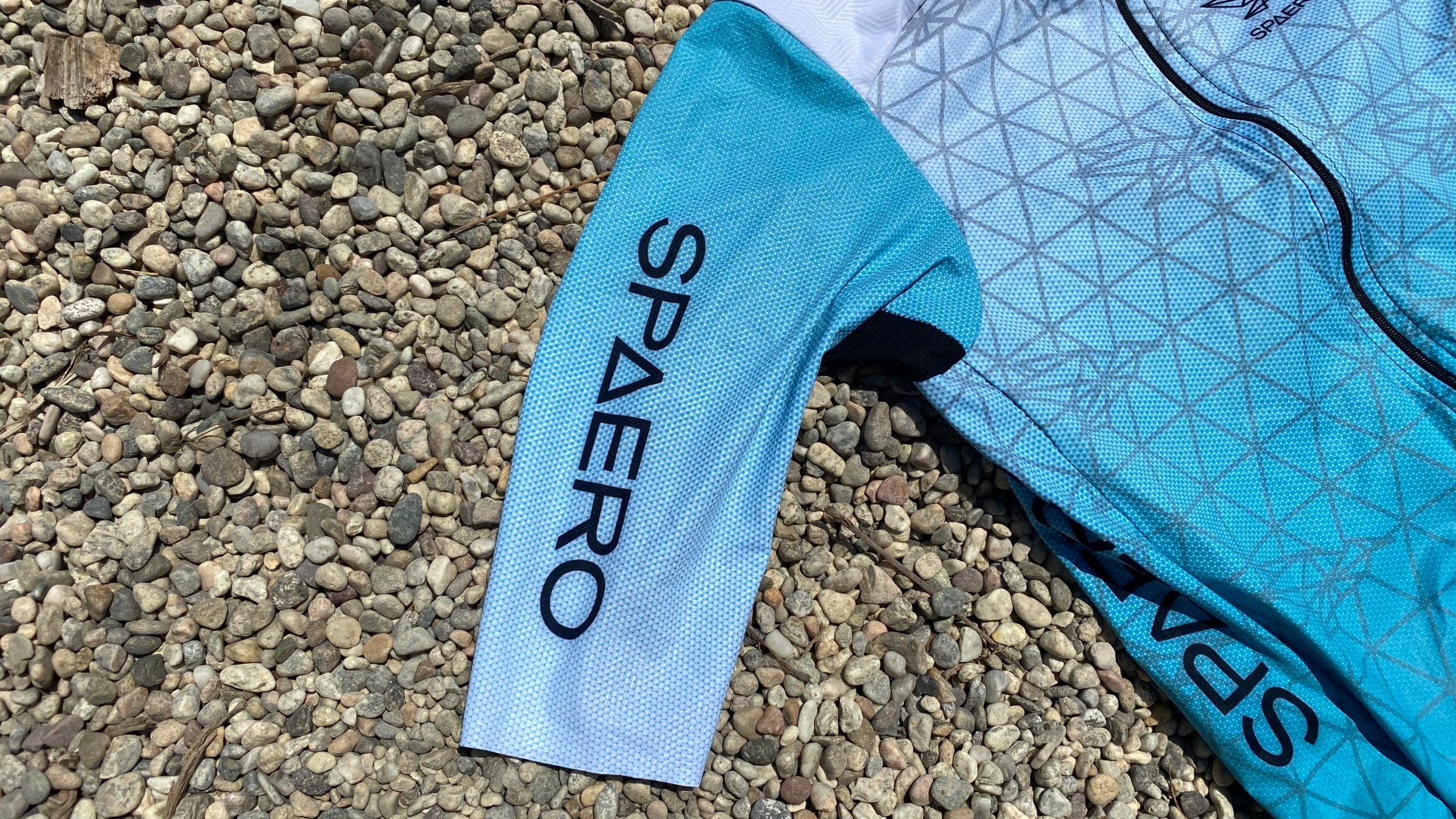
Spaero SP1 Review: Impressions
Certainly the SP1 excels when it comes to hot conditions, as you’d imagine. Sweat wicks off quickly and leaves behind only that telltale salt residue. Spaero says that as a function of their graphene print inside that sweat will wick faster to the outside of the suit, and that you’ll find more salt residue on the outside than on the inside—which was accurate.
More surprisingly, the SP1 did fine in mildly chilly days—even coming out of very cold water. As a function of the suit’s exceptional wicking, water came off the suit while biking much quicker than any of the other suits we tested. This meant that we actually stayed warmer in chilly, overcast conditions than in a thicker suit because we were drier, quicker.
The fabric’s snug fit and fantastic moisture management also made this one of the best suits of the year in terms of chafe management. Even though the fabric isn’t necessarily soft to the touch in sections, its almost paperlike texture did not cause any hotspots. Furthermore, the pad on the SP1 ended up being one of the more minimal ones—in terms of both thickness and in total area covered. This is a good thing for more experienced triathletes who have dialed in their seat already and who want more freedom on the run. For newer triathletes looking for comfort and padding, this chamois may take some getting used to before long events.
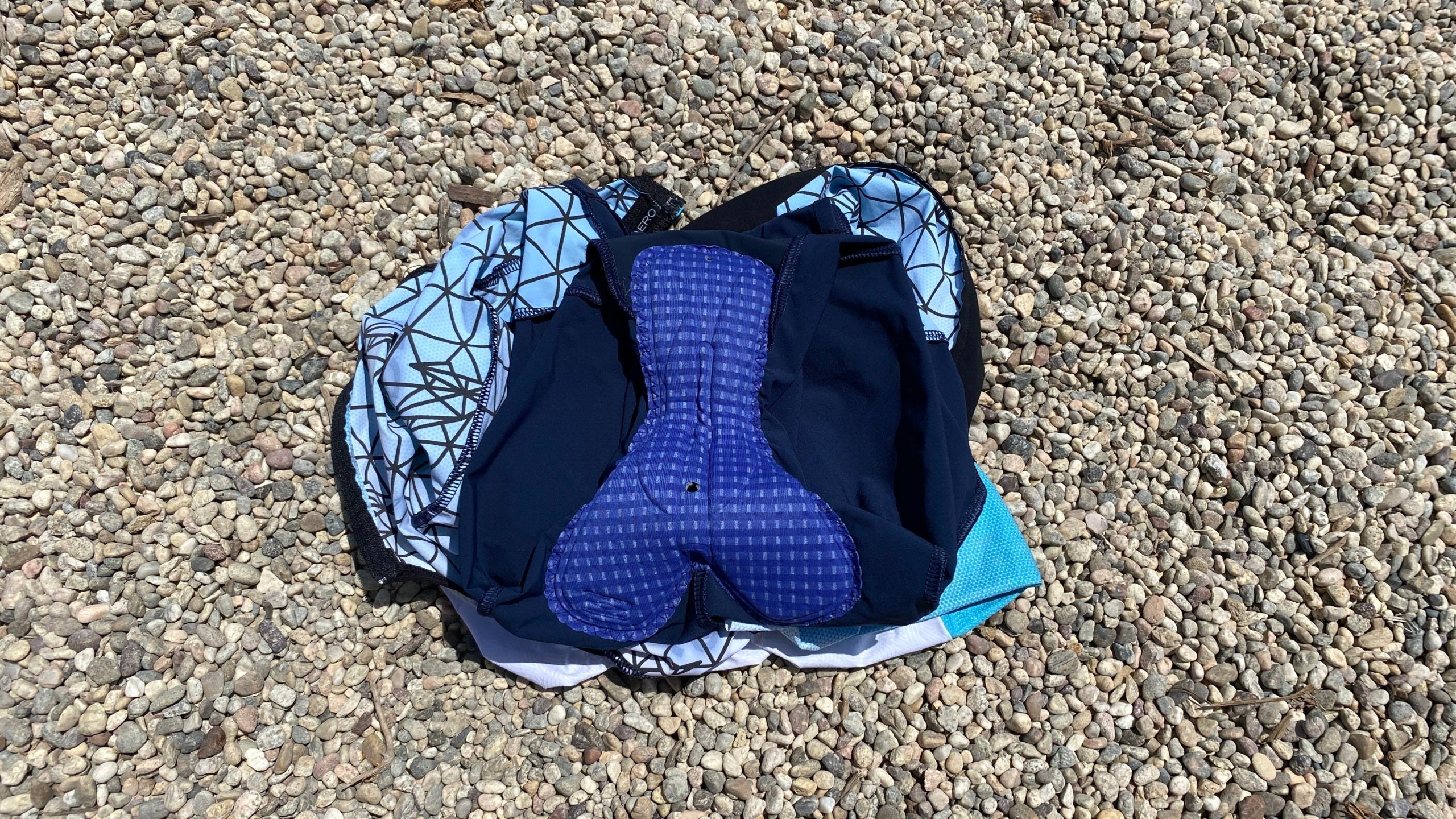
Spaero SP1 Review: Conclusions
In terms of well-thought-out features and attention to detail, there aren’t many suits that we’ve tried that are better than the SP1. From the many many panels of high-tech fabrics, to the woven trip textures/compression, to the myriad of back pockets, and back to the novel hybrid zipper design, there’s not a lot more you can ask for in a tri suit. While the aerodynamics of the SP1 still remain to be tested and seen, it’s probably also a good bet that this suit outperforms any other sleeved suits with no wind trip features at all—whether it’s faster than other suits with silicone trip features like the Castelli PR Speed Suit we don’t know.
Even though $450 might seem like a staggering amount of money to spend on a tri suit, there’s something to be said for a suit that would excel in both the high temps of Kona, but also still do well at a chilly day in Oceanside. The tech in this suit is pretty hard to find anywhere else, let alone all together in one suit, so if you’re looking for a suit that’ll probably never need an upgrade, the SP1 is that suit.
RELATED: The Best Tri Kits
From July/August 2022
